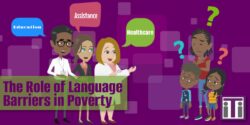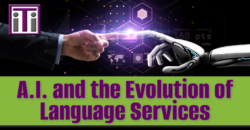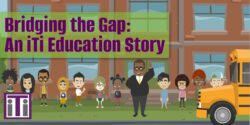
Language is a powerful tool that connects us, but when barriers arise, they can significantly impact various aspects of life, including economic stability. It’s crucial to understand how language barriers contribute to poverty in America and explore strategies for overcoming these challenges.
Understanding Poverty in America
Poverty in America remains a pressing issue, with millions of individuals and families struggling to meet basic needs. The federal poverty level 2024 sets the benchmark for determining who qualifies for various assistance programs. However, language barriers can prevent many from accessing these essential resources, exacerbating their financial struggles.
The Impact of Language Barriers
Language barriers can hinder access to education, employment, and healthcare, all of which are critical for economic stability and growth. For instance, in healthcare, language barriers can lead to misunderstandings, misdiagnoses, and inadequate treatment, further entrenching individuals in poverty. Addressing language barriers in healthcare is vital for improving health outcomes and economic opportunities for non-English speakers.
Poverty Reduction Strategy

A poverty reduction strategy is a plan that outlines actions to reduce poverty and improve the quality of life for those affected. It includes policies and programs aimed at increasing access to education, healthcare, and employment opportunities. Language services are a crucial component of these strategies, as they help bridge the gap for non-English speakers.
A comprehensive poverty reduction strategy must include measures to overcome language barriers. This involves providing language services in schools, workplaces, and healthcare settings. By ensuring that non-English speakers have access to interpreters and translators, we can help them navigate these systems more effectively.
International Day for the Eradication of Poverty
The International Day for the Eradication of Poverty, observed on October 17th, highlights the global commitment to ending poverty. It’s a reminder of the importance of inclusive policies that consider the needs of all individuals, regardless of language. On this day, we can reflect on the progress made and the work still needed to overcome language barriers and reduce poverty.
How to Overcome Language Barriers
- Education and Training: Providing language education and vocational training can empower non-English speakers to secure better jobs and improve their economic status.
- Access to Interpreters and Translators: Ensuring that interpreting and translation are available in critical areas such as healthcare, legal services, and education can help non-English speakers navigate these systems.
- Community Programs: Supporting community programs that offer language classes and cultural integration activities can help individuals feel more connected and capable of participating in society.
Conclusion
Addressing language barriers is essential for reducing poverty and improving the quality of life for non-English speakers in America. As we look at the 2024 federal poverty level, it’s clear that a comprehensive poverty reduction strategy must include robust language services. By doing so, we can create a more inclusive society where everyone has the opportunity to thrive.
| Talk to an Expert |
Interpreters and Translators, Inc. is a full-service language solutions company based in Glastonbury, Connecticut. iTi is an NMSDC-certified minority owned business.





